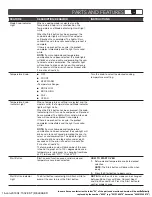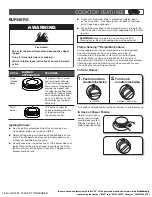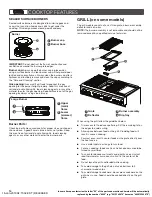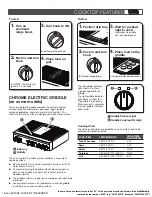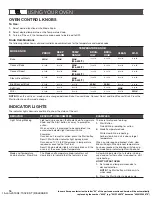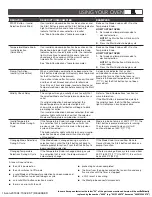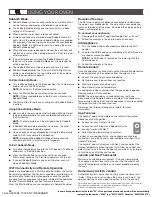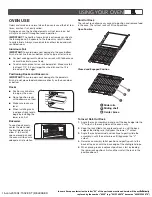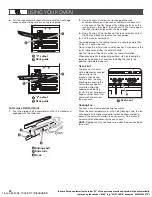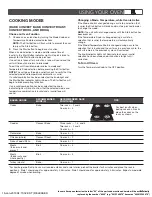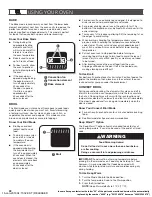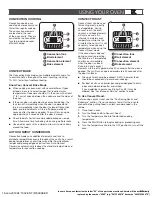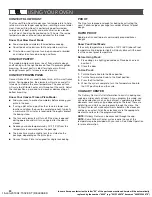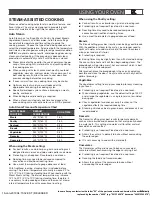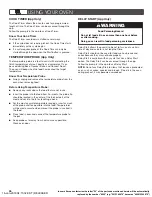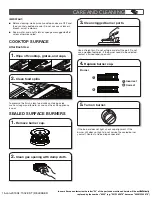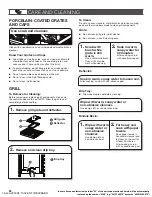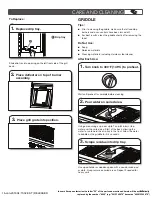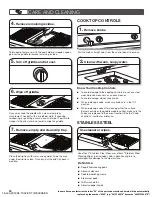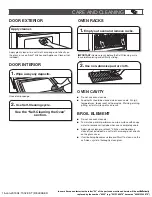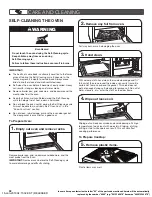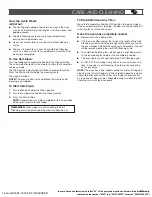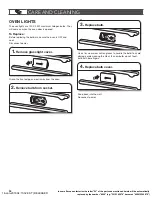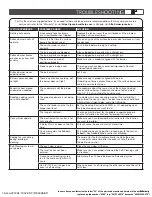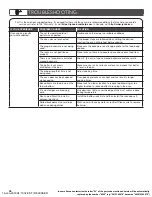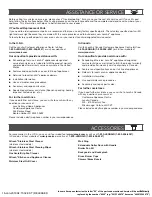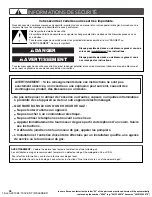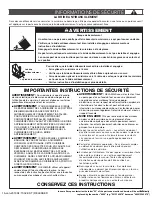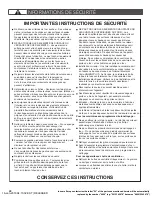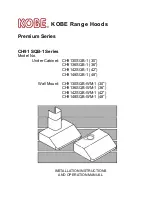
25
USING YOUR OVEN
STEAM-ASSISTED COOKING
Steam-assisted cooking helps to retain moisture, texture, and
flavor in food. The cycles are designed to provide the right
amount of moisture at the right time for optimal results.
Auto Steam
Auto Steam has 7 settings: Meats, Poultry, Seafood, Breads,
Vegetables, Desserts, and Casseroles. Auto Steam settings
have default temperature and time settings to guide the
cooking process. Choose the type of food being cooked, and
select the desired temperature. If desired, both the temperature
and time can be changed according to recipe recommendation.
NOTE:
For optimal cooking results, avoid opening door during
steam-assisted cooking. If the oven door is opened, steam
production is automatically shut off until the door is closed.
■
Steam eliminates the need for the use of parchment paper
wraps (for cooking fish), water baths, and spritzing during
the cooking process.
■
When cooking with steam, place meat, poultry, seafood,
vegetables, desserts, and casseroles into a cool oven. For
best cooking results, allow the oven to cool down from
previous cooking before steam cooking.
■
If oven is warm from use, cooking times may be shorter.
■
Optimum levels of moisture are introduced at the
appropriate time during the cooking cycles.
■
Specially developed cycles enhance browning on meats,
poultry, and bread.
■
When baking bread, preheating is required.
■
When a steam-assisted set cook time has elapsed, the
oven cooking cycle will continue to run until Off is pressed.
Auto Steam Time and Temperature Chart
AUTO STEAM
FUNCTION
DEFAULT
TEMPERATURE
COOK TIME
Meats
325ºF (160ºC)
1:30
Poultry
325ºF (160ºC)
1:30
Seafood
250ºF (120ºC)
0:25
Breads
400ºF (205ºC)
0:30
Vegetables
250ºF (120ºC)
0:30
Desserts
275ºF (135ºC)
0:30
Casseroles
350ºF (175ºC)
0:30
When using the Meats setting:
■
For best results, use a broiler pan, grid, and roasting rack
designed to drain juices and help avoid spatter and smoke.
■
Preheating is not required. Place food in a cool oven.
■
Roasting time may need to be reduced compared to
convection and traditional roasting times.
■
Use a meat thermometer to gauge doneness of food.
With traditional roasting, standing time is included before
carving. The internal temperature will usually increase 5°F to
10°F (2°C to 5°C) during standing time. When roasting with the
Steam Meats setting, the internal temperature may increase
15°F to 20°F (5°C to 10°C) during standing time; therefore, it
is necessary to stop cooking and remove the meat at a lower
internal temperature than with conventional roasting.
When using the Poultry setting:
■
For best results, use a broiler pan, grid, and roasting rack.
■
Preheating is not required. Place food in a cool oven.
■
Roasting time may need to be reduced compared to
convection and traditional roasting times.
■
Use a meat thermometer to gauge doneness of food.
Breads
The Breads setting gives best results when baking yeast breads.
With the addition of steam to the cycle, you no longer need to
spritz with water or to add moisture into the oven to achieve a
crispy crust and moist interior.
■
Preheating is required.
■
Baking times may be slightly less than with standard baking.
The oven will preheat and it will then begin adding steam. The
bread dough will go into a moist, hot environment which is best
for rising and crust development.
After preheat, place the bread dough in the oven as quickly as
possible and close the door. The cycle will end with dry heat for
optimal browning.
Vegetables
The Vegetables setting frees up your cooktop for easy steaming
in your oven.
■
Preheating is not required. Place food in a cool oven.
■
When steaming vegetables, use the default setting of 250°F
and arrange the vegetables in a single layer on a low-sided
baking pan.
■
Check vegetables for doneness early. Freshness of the
vegetable affects the required cooking time.
■
Steaming artichokes, beets, green beans, and broccoli is not
recommended.
Desserts
The Desserts setting gives best results for delicate desserts,
such as crème brulee and cheesecake, that are typically baked
in a water bath. This setting also works well for other custard-
based dishes and souffles.
■
Preheating is not required. Place food in a cool oven.
■
Allows the center of a dessert to bake without overcooking
the outer edges.
■
It is not necessary to cook with a water bath.
Casseroles
The Casseroles setting allows you to bake an uncovered
casserole without over-browning the edges or drying it out.
■
Preheating is not required. Place food in a cool oven.
■
Covering the food is not recommended.
■
Allows the center of the casserole to bake without
overcooking the outer edges.
16-Jan-2019 04:15:32 EST | RELEASED
In some European factories the letter "W" of the part code mentioned herein will be automatically
replaced by the number "4000" (e.g. "W12345678" becomes "400012345678")

